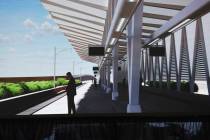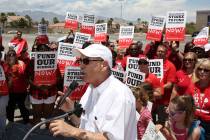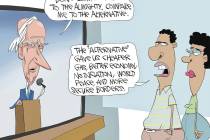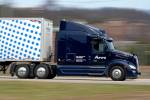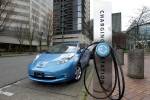EDITORIAL: Self-driving cars stuck in park
Self-driving cars are widely seen as a technology of the future. But they could be the technology of right now, providing consumers with more freedom, flexibility and safety — if only the lumbering truck that is government would just pull over and get out of the way.
More than three years ago, Nevada Gov. Brian Sandoval had the opportunity to ride in a prototype driverless vehicle developed by Google. The governor’s response after letting the Toyota Prius drive itself for several miles: “All of it is amazing. It’s another compliment to American engineering.” That technology has taken huge leaps forward since then, but it’s not much closer to being on the sales floor of your local dealership. As the Wall Street Journal’s L. Gordon Crovitz wrote Monday, federal regulators are putting the brakes on self-driving cars. “If fast-moving technology hadn’t collided with slow-moving regulations, this might have been the last summer you’d have to drive your own car,” Mr. Crovitz opined.
Mr. Crovitz noted that the 2014 Mercedes Benz S-Class sedan is as close as consumers can get to a driverless experience. The vehicle provides 70 percent autonomous driving in congested traffic up to 40 mph, or on open highways up to an eye-popping 120 mph.
U.S. carmakers already have the technology to go further, but U.S. regulators won’t let them. The National Highway Traffic Safety Administration has warned states not to allow fully self-driving cars except for testing purposes.
At least Nevada benefits in that respect: Google has been testing its robo-Prius cars here since 2012, when it received a license from the state to do so. For a change, that bit of regulation allowed the technology to shift into second gear instead of reverse.
Mr. Crovitz reported that the NHTSA is working on a driverless-car study, but it won’t be completed until at least 2017. Meanwhile, countless more people will be injured or killed in entirely preventable accidents. Human error accounts for more than 90 percent of car crashes, leading to more than 30,000 deaths annually, Mr. Crovitz noted, and accidents cost the economy more than $200 billion a year. If only driverless technology were set free.
The decision to hold back this industry will hurt Nevada — just as limitations in the private and business use of drone technology is limiting the economy right now — hindering the state’s already proven track record as a perfect place for testing. One of the single greatest potential benefits going unreaped: With life expectancy rising and an ever-growing elderly population, driverless cars can extend the independence of older drivers. If senior citizens can climb into a self-driving car and safely get where they need to go around town, that represents a massive quality-of-life upgrade for them — with huge safety gains for all drivers on the road.
The government needs to do everything it can to encourage these technologies, not hold them back. Officials need to take their feet off the brakes. For that matter, take them off the gas, too. Let the cars do the driving.











